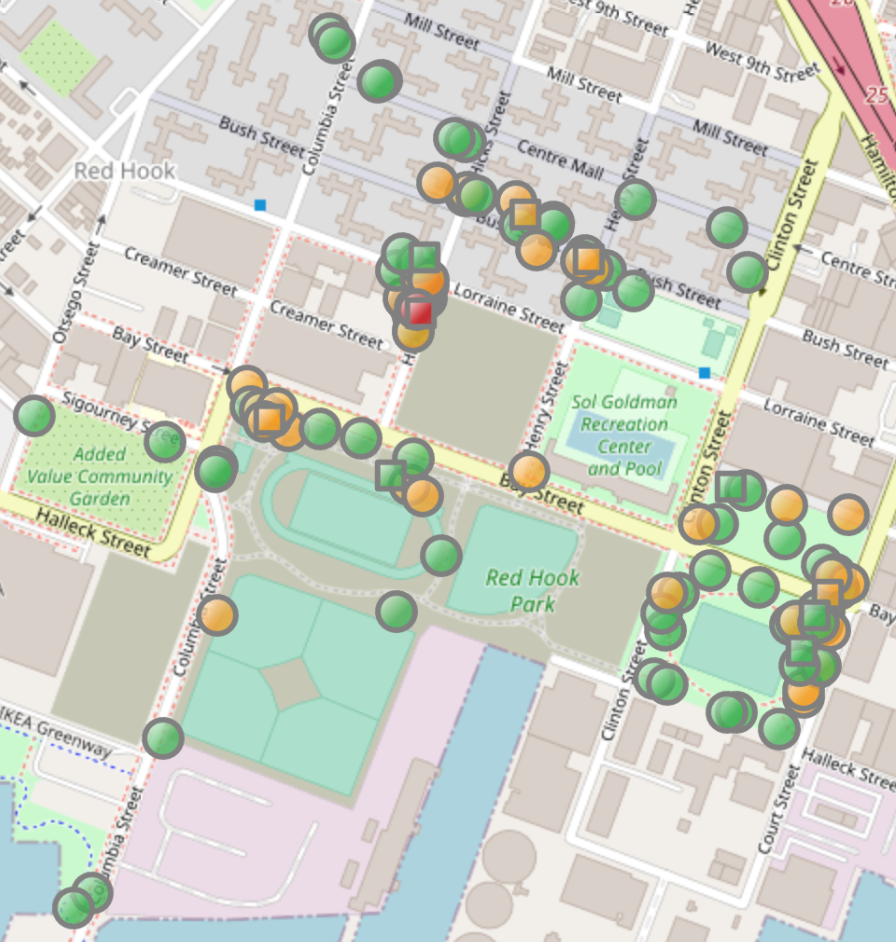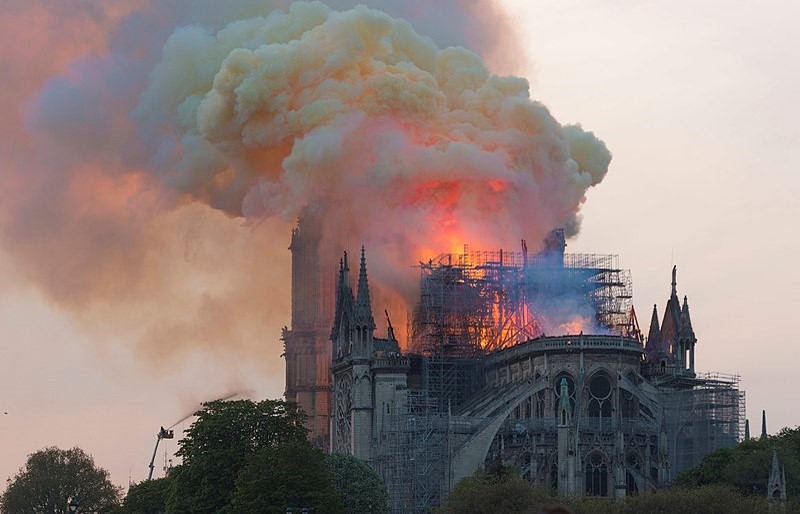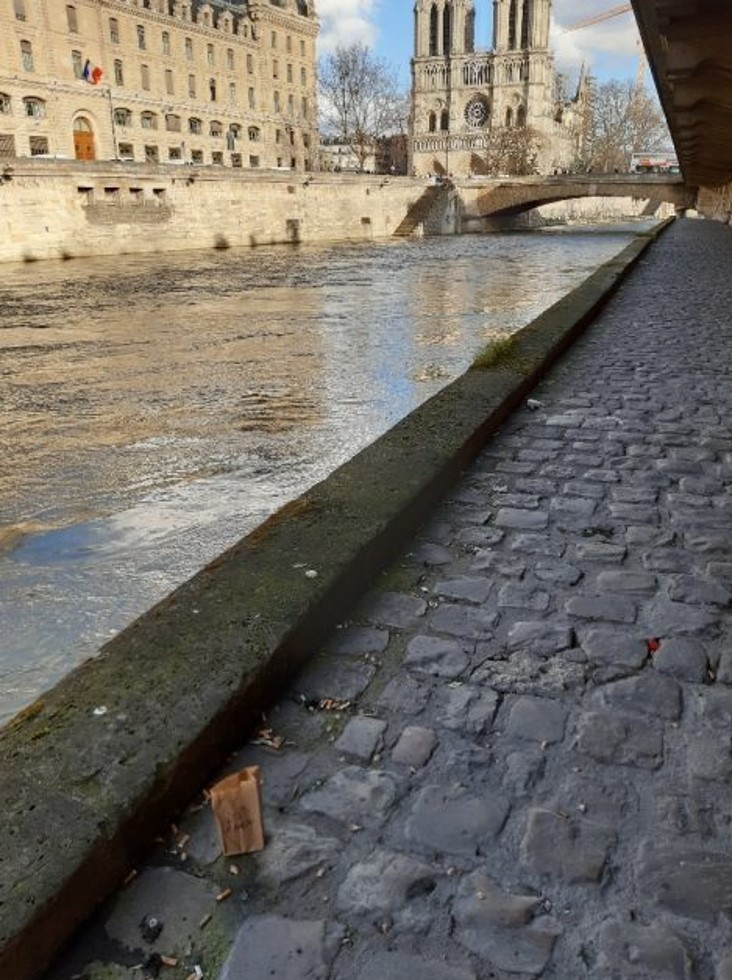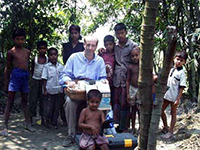 |
lex van geen | |
| |
Latest Highlights

High soil lead (Pb) concentrations resurfacing in Red Hook, Brooklyn
November 16, 2021 A soil survey of Red Hook, Brooklyn indicates that more than a third of surface soil samples did not meet the EPA standard and there is a subsurface peak in soil lead concentrations averaging 1200 ppm at a 1-ft depth both in the housing complex and in the park area. [Download PDF] 
Fallout of Lead Over Paris From the 2019 Notre-Dame Cathedral Fire
July 9, 2020 A soil survey indicates that a ton of lead dust was deposited within 1 km of the cathedral. [Download PDF] Related: Incendie de Notre-Dame : une nouvelle étude relance la question de l'exposition au plomb, lemonde.fr Related: Paris Beehives Trace Notre-Dame's Toxic Fallout, nytimes.com Featured Video
Featured blog posts (arsenic and lead):
Lead Fallout From Notre Dame Fire Was Likely Overlooked
Earth Institute blog linked to publication of study showing that about a ton of lead was deposited in GeoHealth in July 2020. 
Study Identifies Better, Cheaper Ways to Stem Arsenic Poisoning in Bangladesh
Earth Institute blog linked to publication of review of almost two decades of arsenic mitigation in Bangladesh in Environmental Science and Technology in May 2019. 
High School Students in Peru Discover Lead Contamination Hotspots
Earth Institute blog from March 2019 linked to first results from soil-lead survey in several Peruvian towns using a field kit developed at Columbia University's Earth Institute. 
Arsenic Contamination is Common in Punjabi Wells, Study Finds
Earth Institute blog linked to publication of results from large-scale testing campaign of wells in Punjab plains of Pakistan and India in Science of the Total Environment in December 2018. 
Q&A With Lex Van Geen on Arsenic Contamination
Q&A about well-water arsenic with Peter Debaere, Professor of Business Administration, Darden School of Business, on the occasion of an invited World Water Event talk at the University of Virginia in February 2018. 
Report Charges 'Nepotism and Neglect' on Bangladesh Arsenic Poisoning
Earth Institute blog linked to publication of hard-hitting Human Rights Watch report about shortcoming of arsenic mitigation policy in Bangladesh in April 2016. 
Citizen Science, Smartphone Apps and a $10,000 Prize
Announcement of Columbia University competition for funding to develop new smartphones app in April 2016. 
Battling 'the Largest Mass Poisoning in History'
Earth Institute blog with two 9 min videos describing Columbia University's arsenic research in Bangladesh in July 2015. 
Columbia University Scientists Propose Well-Switching as Key to Mitigating Bangladesh Arsenic Poisoning Tragedy
Earth Institute news release on first paper about well-switching in Bangladesh published in the Bulletin of the World Health Organization in June 2002.
|
|
 Research interests: My current research focuses on ways to reduce the impact of the environment on human health. For two decades, I coordinated earth-science and mitigation efforts under Columbia’s Superfund Research Program on the origin and health effects of elevated levels of arsenic in groundwater. A theme that runs through this and other on-going projects, e.g. concerning fluoride in groundwater in India, bauxite dust in Guinea, or soil contaminated with lead from mine-tailings in Peru, is that patterns of contamination are spatially very heterogeneous. This complicates prediction but often also points the way to mitigation when the hazard can be mapped. For this reason, I am a firm believer in the more widespread use of field kits by non-specialists to reduce exposure to environmental toxicants, particularly in developing countries. I collaborate with public health and social scientists to evaluate how such kits can be deployed at scale and have published over 150 peer-reviewed papers on this and other environmental topics. I hold a research professor appointment at Lamont-Doherty Earth Observatory and am a member of the Earth Institute faculty at Columbia University.
Research interests: My current research focuses on ways to reduce the impact of the environment on human health. For two decades, I coordinated earth-science and mitigation efforts under Columbia’s Superfund Research Program on the origin and health effects of elevated levels of arsenic in groundwater. A theme that runs through this and other on-going projects, e.g. concerning fluoride in groundwater in India, bauxite dust in Guinea, or soil contaminated with lead from mine-tailings in Peru, is that patterns of contamination are spatially very heterogeneous. This complicates prediction but often also points the way to mitigation when the hazard can be mapped. For this reason, I am a firm believer in the more widespread use of field kits by non-specialists to reduce exposure to environmental toxicants, particularly in developing countries. I collaborate with public health and social scientists to evaluate how such kits can be deployed at scale and have published over 150 peer-reviewed papers on this and other environmental topics. I hold a research professor appointment at Lamont-Doherty Earth Observatory and am a member of the Earth Institute faculty at Columbia University.